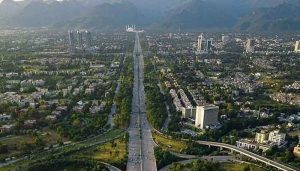Pakistan, a country with a diverse terrain and a rich cultural heritage, is at the forefront of the global climate crisis. This South Asian nation, with its magnificent mountain ranges, expansive plains, and arid deserts, is particularly vulnerable to multiple climate impacts. From rising temperatures to unpredictable monsoon patterns and melting glaciers in the north to severe droughts in the south, the challenges posed by climate change are diverse and significant. Reliance on seasonal monsoon rains, which are becoming increasingly erratic, further worsens the vulnerability of the country’s predominantly agrarian economy.
Climate Change Impacts
In recent decades, Pakistan has experienced a notable increase in average temperatures. The Pakistan Meteorological Department reported that the country’s average annual temperature rose by approximately 0.6°C from 1901 to 2020, leading to more frequent and severe heatwaves. In June 2015, Karachi endured a deadly heatwave that caused over 1,200 deaths.
In the northern regions, the fast melting of glaciers presents a twofold danger. Pakistan has over 7,000 glaciers, the largest number outside the polar regions. A study by the International Centre for Integrated Mountain Development (ICIMOD) shows that these glaciers are shrinking rapidly, raising the risk of glacial lake outburst floods (GLOFs). Such incidents have been especially devastating in the Gilgit-Baltistan region, endangering communities and infrastructure.
The unpredictability of rainfall patterns in Pakistan has become the norm. The monsoon season contributes to about 70% of the country’s annual rainfall and has shown increasing variability. In 2022, unprecedented monsoon rains caused catastrophic flooding, affecting over 33 million people and causing approximately $10 billion in damages. Conversely, regions like Balochistan and Sindh experience prolonged dry spells, leading to severe droughts.
Extreme Weather Events
Monsoon floods are a major problem for Pakistan. Heavy rains, deforestation, poor land management, and rapid urbanization lead to widespread flooding. The 2010 floods were one of the worst in the country’s history, affecting over 20 million people, submerging one-fifth of Pakistan’s land area, and causing damages exceeding $16 billion.
On the other hand, regions like Balochistan and Sindh frequently face droughts. These prolonged dry periods strain water resources, hinder agricultural productivity and worsen food insecurity. According to the Pakistan Council of Research in Water Resources (PCRWR), if current trends continue, Pakistan could face absolute water scarcity by 2025.
Socio-Economic Impacts
Pakistan’s agricultural sector is susceptible to climatic changes as an agrarian economy. The industry employs about 40% of the workforce and contributes roughly 19% to the GDP. However, altered weather patterns and water scarcity threaten crop yields. The 2020-2021 agricultural year saw a decline in wheat production by 2.5 million tonnes due to erratic weather, impacting food security and the livelihoods of millions of farmers.
The reliance on a few major river systems, primarily the Indus River, underscores the critical importance of water management. Changing precipitation patterns and over-extraction further stress these vital resources. According to the World Resources Institute, Pakistan ranks 14th among the countries facing extremely high water stress.
The increased frequency of extreme weather events poses significant health risks. Heat waves contribute to heat-related illnesses while changing climates can facilitate the spread of vector-borne diseases such as dengue and malaria. The 2015 heatwave in Karachi overwhelmed hospitals, with thousands suffering from heatstroke and dehydration.
Adaptation and Mitigation Efforts
Given the gravity of the situation, the Pakistani government has implemented several policies. These include the National Climate Change Policy and the establishment of the National Disaster Management Authority. These initiatives are designed to improve the country’s ability to withstand the impacts of climate change. The Ten Billion Tree Tsunami Programme, which was launched in 2018, aims to plant 10 billion trees by 2023 to address deforestation and land degradation.
Efforts are in progress to build dams, upgrade irrigation systems, and establish early warning systems for floods and heatwaves. For example, the Diamer-Bhasha Dam project aims to enhance water storage and electricity generation, which will assist in flood control and irrigation.
Local communities play a crucial role in adapting to climate change. They adopt water conservation practices, switch to climate-resilient crops, and participate in afforestation projects. Grassroots efforts are making a significant difference. Projects such as the Chitral Integrated Area Development Programme empower local communities to build resilience against the impacts of climate change.
Challenges Ahead
Despite these efforts, there are still significant challenges. Political instability, bureaucratic inefficiencies, and limited resources often hinder the effective implementation of policies. Securing sufficient funding for large-scale adaptation and mitigation projects, which requires international aid and investment, remains critical. Furthermore, it is essential to raise public awareness and educate communities about sustainable practices to foster long-term resilience.
Conclusion
Pakistan is currently facing a critical moment in combating climate change. The challenges are significant, but the country can overcome this crisis through strategic planning, strong policy measures, international cooperation, and active community participation. It’s essential to build resilience against the impacts of climate change, not only for environmental reasons but also as a socio-economic necessity to ensure a sustainable future for Pakistan and its people. Moving forward, it’s crucial to remember that the fight against climate change is a collective effort. Every small step towards sustainability contributes to the larger goal of securing a safer, more resilient future for future generations.
Disclaimer: The views and opinions expressed in the article belong solely to the author and not necessarily to the author’s employer, organization, or any other group or individual.














